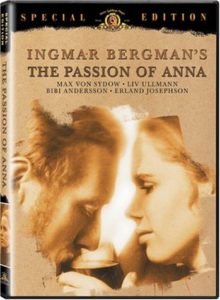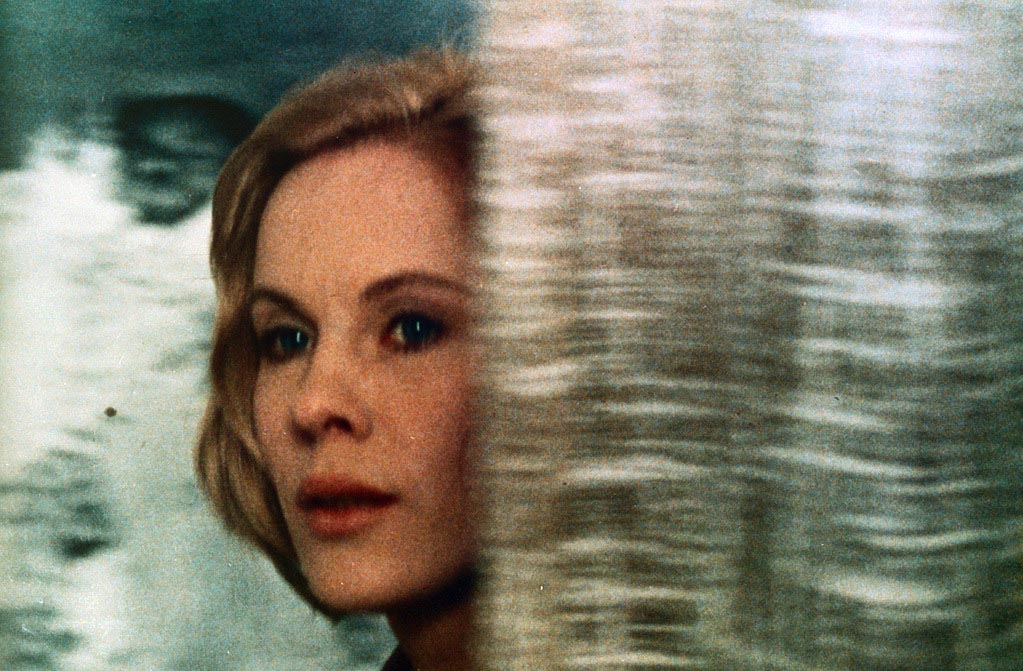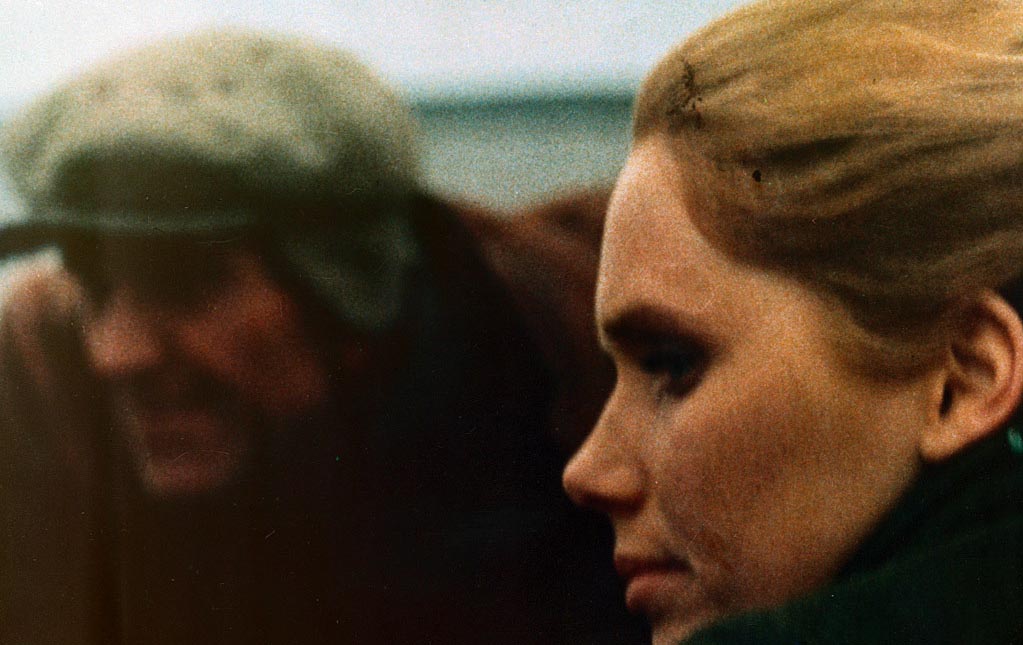Bergman’s Experimental Introspection Stars Max von Sydow, Erland Josephson, and Liv Ullmann
DIRECTED BY INGMAR BERGMAN/SWEDISH/1969
STREET DATE: APRIL 20, 2004/MGM
This review was written in 2004 as part of a series of Bergman reviews covering each film in a then-newly released six-disc DVD box set from MGM. I share this in observation of Ingmar Bergman’s centennial in the current month of July 2018.
*****
 Poor Max von Sydow. Over and over again, Ingmar Bergman has put him through various scenarios that result in the disintegration of his on-screen humanity. In the long strange history of actor/director alter ego pairings, few have been so seemingly abusive. (Maybe Sam Raimi’s treatment of Bruce Campbell in the Evil Dead series qualifies, but it’s really not quite the same.) For the third film in a row, Bergman has seen to it that von Sydow’s character is mentally destroyed while he’s clearly acting out various issues of the director’s troubled psyche. Some may call this abuse to not only the actor, but also the audience; but more often, it’s rightfully called art (and I would suspect that Max von Sydow would agree.) Once one cuts to the autobiographical core of these films, there is no denying their brilliance.
Poor Max von Sydow. Over and over again, Ingmar Bergman has put him through various scenarios that result in the disintegration of his on-screen humanity. In the long strange history of actor/director alter ego pairings, few have been so seemingly abusive. (Maybe Sam Raimi’s treatment of Bruce Campbell in the Evil Dead series qualifies, but it’s really not quite the same.) For the third film in a row, Bergman has seen to it that von Sydow’s character is mentally destroyed while he’s clearly acting out various issues of the director’s troubled psyche. Some may call this abuse to not only the actor, but also the audience; but more often, it’s rightfully called art (and I would suspect that Max von Sydow would agree.) Once one cuts to the autobiographical core of these films, there is no denying their brilliance.
Beginning with 1968’s horror entry Hour of the Wolf and continuing with the war story Shame that same year, Bergman paired von Sydow with his then real life significant other, Liv Ullmann, as a troubled couple trying to make sense of their lives. While those films used their respective genres as vehicles for the filmmaker’s visionary pessimistic self-probing, this next and final film in the cycle, The Passion of Anna (1969) is more of an inner-psychological exercise disguised as an experimental character study. A narrative plot is almost an after-thought here, as Bergman gets so wrapped up in detailing his characters’ undoings that he himself often acts as the narrator in order to fill in the intentional blanks in the story.

As with the previous Bergman films in this era, Max von Sydow’s character Andreas is living on the director’s remote home island of Fårö, although this time not as an artist, but more of an everyman. As the film unspools, we find out surprisingly little more about him. He meets characters played by other Bergman alum (Bibi Andersson, Erland Josephson, and Liv Ullmann in the titular role of Anna), ultimately settling down with the latter. Of course, the fact that Bergman and Ullmann were on the rocks during the creation of this film plays out not just in the fate of the main characters’ relationship, but in the very way they relate through the entire film.
When we first meet Ullmann’s Anna, she is a sympathetic and mysterious woman with a hurt leg who’s recently lost her husband and child in a car accident. Andreas shows her compassion, but also snoops through her purse when she accidentally leaves it behind. Before settling into a troubled relationship with Anna much later, he has an affair with Andersson’s delicate Eva, (Bergman was with Andresson prior to Ullmann,) followed by a strange meeting with her socialite photographer husband Elis (Josephson). Eventually, Andreas comes to realize Anna’s religious passion and his Godless worldview cannot pleasantly co-exist. All the while, there are reoccurring acts of animal brutality happening all over the island, something that an innocent man is blindly blamed for.
If The Passion of Anna sounds like a strange and difficult film to explain, you’ve hit it on the head. Not only does this film almost completely disregard its would-be conventional plot, the animal slaughter whodunit, but it goes out of its way to break the forth wall and be self aware. At random points in the film, Bergman inserts brief interviews with his four main actors out of character and commenting on their roles. In these moments a slate is clapped and Bergman’s voice is heard asking them questions. This is the sort of cinematic deconstruction that only could’ve happened this purely in the late 1960s, and for that reason, it, along with 1966’s Persona, nicely bookends this era of Bergman’s career in this series of MGM special edition DVDs.

The fact that I’m saying this film is not at all for those simply looking for a fun movie on DVD is not meant to in any way diminish its status as a nearly brilliant piece of cinematic art. Ingmar Bergman brings more elements of his own life and filmography to The Passion (its international title) than even the most self-aware filmmakers dare to usually put on screen. In other words, not only is this probably for film buffs only, but for Bergman buffs only. Also of note is the fact that this is only Bergman’s second film to be shot in color (excellently by frequent collaborator Sven Nykvist). I heavily recommend watching the previous three films in this MGM Bergman series before taking on this one, in order to acquire a deeper understanding of what is on display here.
Like the other DVDs in this series, this one includes a twenty-minute featurette (“Disintegration of Passion”), a decent commentary by Marc Gervais, a trailer, and a small photo gallery. This time, however, we also get a look at Bergman’s unique writing process in the form of the Original Story Reading by Elliot Gould. Gould reads the entire Bergman story for the film in just under an hour. It can be a long haul at times, but for those truly interested, the differences between what is written and what ended up on screen will be illuminating.
This is not an easy film to whether – visually and emotionally disturbing content persist – but Bergman’s passion for his craft truly comes out in The Passion of Anna.

